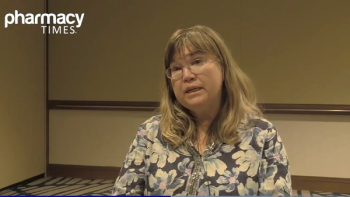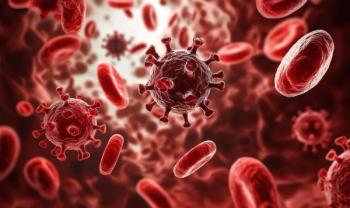
Expanding the Role of the Pharmacist in the Wake of COVID-19
Community pharmacists should consider leaning on their specialty pharmacist peers, where available, as we continue to navigate the new, more virtual normal and attempt to expand these types of services in the future.
The past year has been unlike any year in recent history, as the world has been consumed with a pandemic most people could not have even fathomed. Damage has been done in so many areas, in so many subsectors of the world’s population, affecting health and mortality, as well as social and financial impacts and everything in between.
As a society, we hope to have a light at the end of this long and arduous tunnel, with COVID-19 vaccines becoming more readily available by the day and testing being more streamlined and available than ever before. Throughout the COVID-19 pandemic, health care workers have often been lauded for their heroic efforts in helping the United States battle this virus to the best of its ability.
Many physicians, nurses, medical assistants, and others have taken on additional responsibilities and risks while their everyday roles evolve on a daily basis. Health care workers across the country have largely taken this in stride and truly deserve these heroic titles.
However, a pivotal health care professional who is sometimes overlooked during this pandemic is the pharmacist. Pharmacists, as well as pharmacy technicians, have arguably sacrificed, adapted, and persevered just as much as any other health care professional in the wake of COVID-19.
Their day-to-day roles have changed to include the implementation of widespread prescription delivery services in many retail pharmacies, educating many more patients virtually, performing COVID-19 testing out of pharmacy drive-throughs, preparing and ultimately administering the COVID-19 vaccine, and much more. Although the expanding roles have not only been quite impressive and also vital for helping the country through this pandemic, the expansion is likely far from over as these accomplishments and new capabilities will help to grow and diversify the field of pharmacy for years to come.
Immediately at the start of the pandemic, pharmacists showed their agility by drastically changing the typical pharmacy dispensing model. Delivery of prescriptions is something that has been around for decades but has never been as widespread and on-demand until the recent need grew for social distancing, isolation, and quarantining.
Both large chain pharmacies and small independent pharmacies have found many new, creative ways to get their patients the medications they need safely and quickly. From creating new system capabilities to counseling patients virtually, pharmacies rapidly evolved from the pandemic’s start to make sure that patients remain adherent to their medications and stay as healthy as possible.
Providing many more consultations virtually and connecting with far more patients digitally will allow pharmacists in the future to operate more in these spaces and will likely create new opportunities. Pre-pandemic, pharmacists were already taking on new roles and looking to expand the pharmacy industry. With these new skills and pathways now available, the innovation may certainly be accelerated.
It would not be surprising if initiatives such as tele-pharmacy and increased services and communications provided virtually—such as medication therapy management sessions, diabetes coaching, or entirely digital pharmacy communications—begin to take form on larger scales over the coming years.
While implementing and improving delivery and digital systems in retail pharmacies was surely a daunting task, it pales in comparison to the task of building COVID-19 testing models for retail pharmacies. Before the pandemic, very few pharmacies offered testing services for infectious/viral diseases such as COVID-19, and now many have added that service to help the country combat the virus.
In just a matter of weeks, retail pharmacies were able to train employees, create policies, build workflows, as well as other tasks to be able to schedule and test patients in communities across the country. Because of this, pharmacies have been a huge piece of the testing strategy and have allowed for much more available testing across the country—something that has been vital to getting the virus in better control.
Considering the testing successes in the pharmacy industry, once COVID-19 (hopefully) wanes, retail pharmacies should be in a unique position to use the systems and processes they’ve built to potentially test for other infectious diseases, such as influenza or strep, going forward. Additionally, it is conceivable some pharmacies could use this as a springboard to enter the industry for other types of point of care testing like cholesterol tests, genomic testing or many other types of tests that pharmacists are certainly capable of both administering and educating their patients.
These services will not only expand the roles of pharmacists and their technicians but also will drive revenue increases during a time when reimbursement rates are low, and times are hard for many pharmacies. Additionally, since pharmacists are widely considered the most accessible health care professional, having these additional tests readily available can increase their overall usage, and thus diagnosis across many populations.
While we consider the role of the pharmacist in combatting the COVID-19 pandemic, it is impossible not to highlight the gargantuan effort pharmacists have already taken on to vaccinate our country against COVID-19. Vaccination is another completely new and very high demand workstream that pharmacists have simply added to their workloads.
After nearly a year of mask wearing, social distancing, and quarantining, the country is desperate for an end to this pandemic and has long known that the true end is likely only possible with a vaccine. Now that many vaccine candidates have been approved and are becoming available, the country faces what many consider to be an impossible feat of rapidly and successfully delivering these vaccines to millions of people.
While it will ultimately be a team effort across the health care continuum, what has already been seen is that pharmacists are able to reach more patients at a faster rate than other professionals. Pharmacists have already played a pivotal role in the vaccinations of long-term care clinics and will likely be even more impactful vaccinating the general public considering their wide reach, availability to patients, and the strides pharmacies have already made in the digital space, which will allow for easier mass scheduling going forward.
One of the biggest wins around COVID-19 vaccines for pharmacists is how it can expand their roles going forward. Although pharmacists have been vaccinating their patients for years, many patients have never gotten a vaccine at the pharmacy.
Another large portion of patients probably have received an annual flu shot at their local pharmacy, but have been unaware of all the other vaccine offerings most pharmacies provide. With pharmacies being the most accessible destination for COVID-19 vaccines in many states, this is an opportunity to screen for additional vaccine gaps in patient profiles as well as build a relationship as a trusted source for all vaccines in the future.
In some states, even pharmacy technicians and interns have gained the ability to vaccinate amidst the pandemic and will likely keep these certifications and abilities going forward. This will allow pharmacists to focus on other emerging clinical work and services and allow pharmacies to have a greater efficiency and output when it comes to administering vaccines going forward. The success of pharmacists across the country in COVID-19 vaccine administration will no doubt put pharmacists and their teams in a position to be the primary source for vaccines going forward.
While the focus here has been primarily pharmacists working in the community setting, our profession’s reach is even greater when considering pharmacists in every corner of the industry. From a COVID-19 vaccine perspective, hospital and health-system pharmacists have played a huge role in vaccination throughout the pandemic and will continue to do so.
Similarly, many pharmacists working in non-direct patient facing roles, such as managed care and specialty, and even retired pharmacists have stepped up to assist and vaccinate during these trying times making the professions’ impact and footprint even greater. When considering all the previously mentioned sudden changes that were required by retail pharmacies early in the pandemic, such as having to implement and rely on more over the phone and virtual counseling, this is something that has been prominent in other subsectors of the pharmacy profession for quite some time, most notably in specialty pharmacy.
Because the business model of specialty pharmacy focuses on centralized or remote pharmacies dispensing to patients over large geographical areas, virtual is often the only mode for counseling patients on drugs that usually require a lot of education, monitoring, and adherence counseling. Community pharmacists should consider leaning on their specialty pharmacist peers, where available, as we continue to navigate this new, more virtual normal and attempt to expand these types of services in the future.
Specialty pharmacists can teach us how to provide a very high level of coordination and care to their patients both digitally and over the phone as they have a proven track record of being able to build relationships, gain the trust, and ensure the adherence of their patients often without ever meeting them face to face. These are skills that have been of extreme importance for all health care professionals throughout the pandemic.
For decades, pharmacists across the industry have been regularly named as one of the most trusted health care professionals, as well as one of, if not the most accessible. In the past year, these titles have likely only strengthened.
Pharmacists are available in nearly every community and are almost always only a phone call or short drive away. One could argue that pharmacists and their staff have evolved more than any other health care professional in the last year.
On top of all their typical daily work and responsibilities, so many have taken on completely new workstreams to support the country throughout the pandemic. This work has undoubtedly proven the pharmacist’s worth and importance in the health care continuum.
As testing and especially vaccine distribution continues, pharmacists will continue to prove themselves and show the difference they can make. There is no doubt that this work should give the industry more diversification and the ability to grow and expand going forward as the pharmacy industry now has many inroads and avenues for greatly expanded services to help with profitability, adherence, and the overall health of our patients.
When this pandemic is finally behind the country, some may forget all of the new work that was taken on by their local pharmacist but what will never be forgotten is the gigantic footprint left by the pharmacist as part of the solution.
About the Author
Molly Gombos earned her Doctor of Pharmacy degree from the University of Pittsburgh in 2014 and is currently enrolled at Pitt in the Master of Pharmacy Business Administration (MPBA) program, a 12-month, executive-style graduate education program designed for working professionals striving to be tomorrow’s leaders in the business of medicines. Molly has spent the last 7 years working in community pharmacy, initially as a pharmacist and pharmacy manager and most recently working in pharmacy operations. Her current role is working in the patient safety and clinical space with focus on clinical decision support.
Newsletter
Stay informed on drug updates, treatment guidelines, and pharmacy practice trends—subscribe to Pharmacy Times for weekly clinical insights.



















































































































































































































